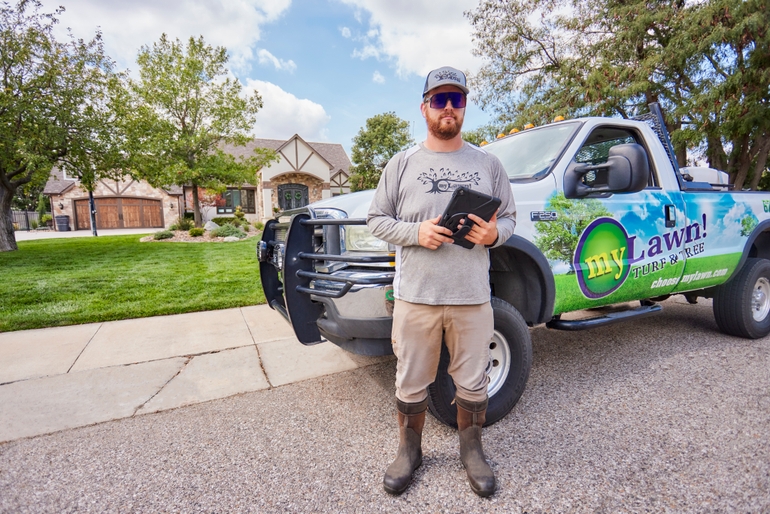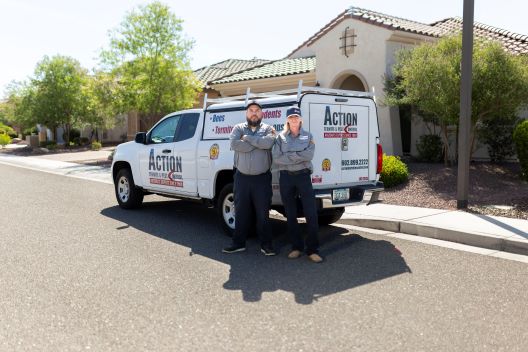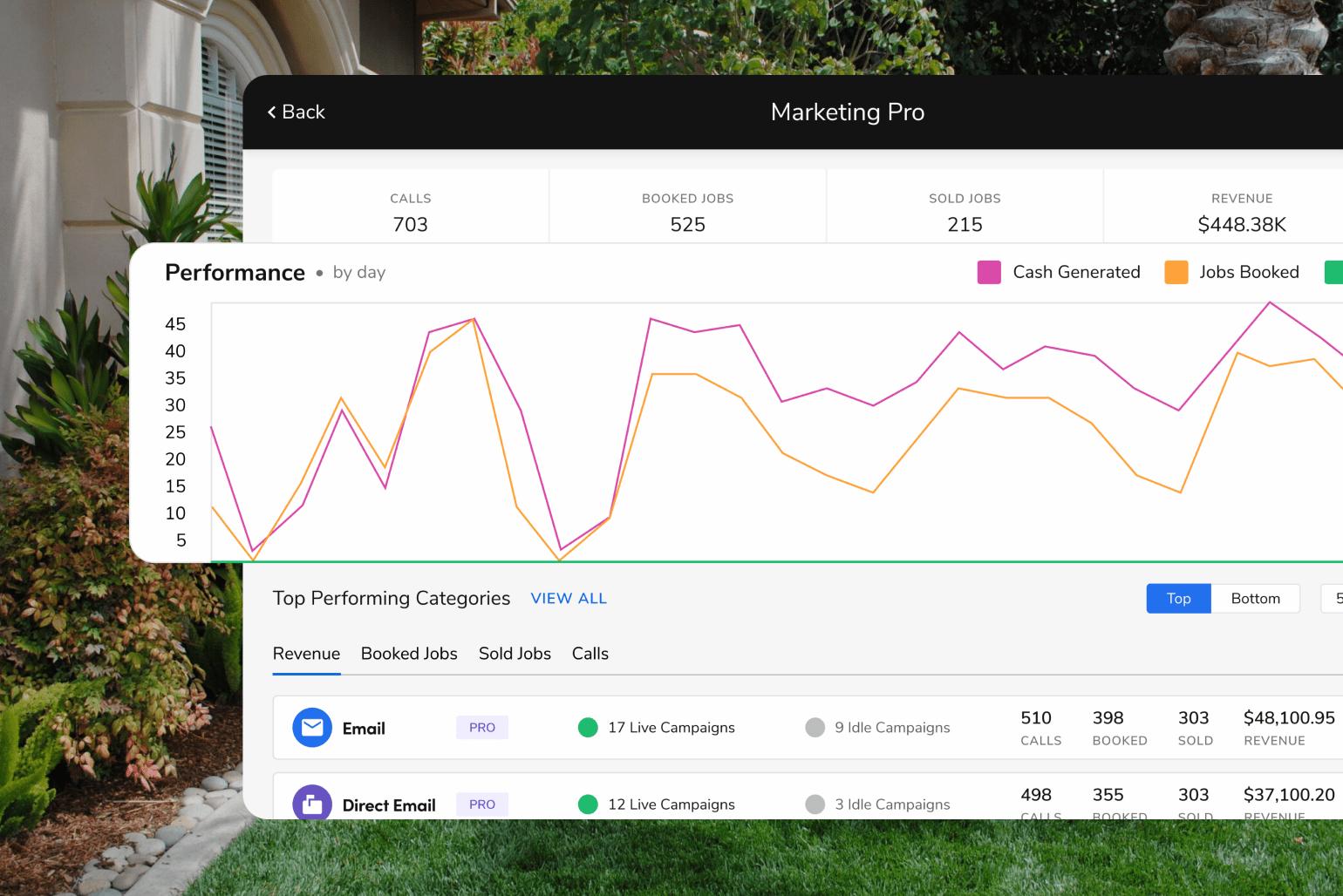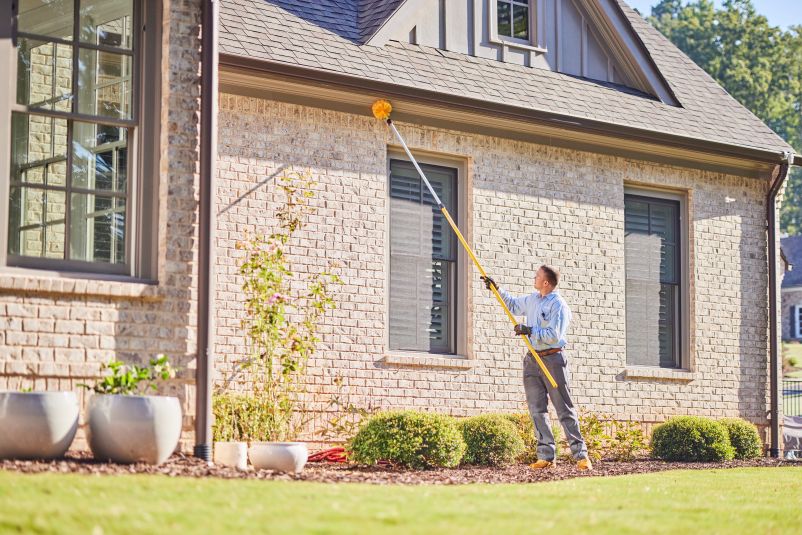How to Market Your Lawn Care Business (Actionable Strategies)

How to Market Your Lawn Care Business
Running a lawn care business takes a lot of time and effort, leaving little energy to stay updated on digital marketing best practices.
When a lawn care or landscaping company owner wants to run a marketing campaign to generate new leads or boost revenue, they may need help knowing where to start or how to achieve the best ROI.
If this sounds familiar, continue reading for valuable insights, practical tips, and actionable strategies that help lawn care professionals improve their digital marketing efforts.
Creating an Effective Digital Marketing Strategy
Before diving into digital marketing, lawn care business owners and marketers should spend time building a digital marketing strategy. This helps ensure you’re targeting the right people, using the proper channels, and garnering a return on the investment of marketing dollars.
A digital marketing strategy requires research, goal setting, and an omnichannel approach. Follow these three steps to build a digital marketing strategy.
1. Understand Your Target Audience
One of the pros of digital marketing is the ability to use targeting options, such as demographics, interests, and household income, to promote your lawn care services to the right audience. That’s not something you get with billboards, newspapers, and TV commercials.
It’s crucial to know who your audience is to avoid blowing your marketing budget. This starts with conducting market research and creating buyer personas for your company. Gather insight on homeowners or commercial businesses by interviewing or sending surveys to your existing customer base.
Once you know your ideal customer type, tailor your messaging to meet their needs and concerns. For example, a large segment of your customer base may prioritize eco-friendly products because they have kids and pets. You might develop an ad that shows kids and pets playing on a lawn and highlights your eco-friendly services in the copy.
2. Set Marketing Goals and Objectives
Well-defined goals are essential for measuring performance and evaluating the success of your marketing initiatives. Without clear objectives, gauging the effectiveness of your marketing efforts and understanding their impact becomes an impossible task.
Set SMART marketing goals for your landscaping business:
S: Specific
M: Measurable
A: Attainable
R: Relevant
T: Time-bound
For example, if you’re promoting a fall cleanup special, you may set a goal to acquire 20 new leads by a specific date. Be sure you have tracking mechanisms (UTMs, pixels, tracking numbers, etc.) to know where you acquire your leads so the goal is measurable.
To determine whether your goal is attainable, look at the same period in years past and where your business is today. You want the goal to be a stretch but realistic. A goal of 200% growth in one month is not attainable.
By setting SMART goals, you give your lawn care or landscape marketing team a clear roadmap to work toward.
3. Develop a Comprehensive Digital Marketing Plan
Now, it’s time to build your digital marketing plan. And with buyer personas and goals set, you’ve already completed two steps.
To develop a digital marketing plan, evaluate your existing online marketing channels and assets. Examine what you’ve done before, brainstorm new lawn care marketing ideas, and then plan your future digital marketing campaigns.
Digital marketing strategies to consider are:
Content marketing
Search engine optimization (SEO)
Search engine marketing (SEM)
Social media marketing
Email marketing
While the list above contains separate strategies, each marketing channel plays a part in your digital marketing strategy. It takes an average of eight touchpoints to convert a lead. Touchpoints refer to how often the lead comes into contact with your brand and messaging.
For example, they might see a Facebook ad, search ad, and receive an email. Then, when they search “lawn care near me” in Google and your company shows up, they recognize the name and reach out.
Optimizing Your Online Presence
Today’s consumers search for service providers and pricing online. Learn how to optimize your lawn care company’s digital presence to meet customers where they are.
4. Build a Conversion-Optimized Website
Spending time and money on digital marketing is all for naught if your lawn care or landscaping website isn’t optimized to convert visitors. This requires a clean website designed for user experience, compelling calls to action, and effective lead capture forms.
Elements to keep in mind when building or updating your lawn care website include:
Mobile-friendly design: More than half of web traffic is mobile. You're missing out if your website isn’t optimized for a mobile experience.
Page speed: According to Google data, 53% of mobile visitors abandon a page that takes longer than three seconds to load. Check your page speed insights here.
Usability: Your web design should be inviting and engaging, with the most important information (business phone number, lead forms, etc.) highlighted so users don’t have to search for it. Make lead forms super simple to fill out and submit. The less work the potential customer has to do, the better.
Accessibility: Check out web content accessibility guidelines to ensure your website works for people with disabilities.
Landing pages: Build out particular landing pages for ad campaigns. The landing page should speak to the advertised offer and include a lead form or contact information for the potential customer to reach your company.
5. Leverage Local Search Engine Optimization
When potential customers need lawn care or landscaping services, they look online. To be discovered by these online shoppers, your business must be optimized for online search.
Specifically, local businesses should leverage local search engine optimization (SEO) tactics, so potential customers find your business when searching for lawn care companies near them. Local SEO strategies include:
Local keywords: Use location-specific keywords throughout your website and marketing content. Doing so pushes your business higher in online search results. Examples include Kansas City mowing, lawn services in San Antonio, and Indianapolis lawn care.
Google Business Profile: Claim and complete the information on your company’s Google Business Profile (formally known as Google My Business). Your Google Business Profile is a major ranking factor for Google Search and Google Maps.
Free business profiles: Claim and build out free profiles on other business listings such as Yelp, Better Business Bureau (BBB), and Yellow Pages. Each listing counts as a citation, one of the most important ranking factors in local search.
Reputation management: Respond to online reviews promptly. According to Google, replying to reviews is an indicator of customer trust.
6. Harness the Power of Social Media
Since social media pages are free to make, social media has become an excellent avenue for lawn control companies to increase brand awareness, advertise their services, and connect with customers more personally. Each social media platform offers unique advantages, making it essential for your social media strategy to include the most relevant ones for your target audience.
We recommend Facebook and Instagram as a good starting point for lawn care companies. They are great for local engagement and showcasing your work, plus Facebook Ads are affordable and easy to launch.
Foster a sense of community by promptly engaging with followers' comments and messages. Encourage them to share their lawn care stories and tips, creating a two-way conversation that builds trust and loyalty.
Consider targeted social media advertising to reach specific demographics in your service area. Collaborating with local influencers, such as gardening bloggers or lifestyle influencers, can widen your reach and tap into their engaged audiences.
Driving Traffic and Conversions to Your Lawn Care Business Website
You’ve set yourself up for success by optimizing your website and setting goals. The next step for success is driving high-quality traffic and conversions to your website. Learn how.
7. Invest in Pay-Per-Click (PPC) Advertising
If you want to grow leads for your lawn care business, consider pay-per-click (PPC) advertising. PPC advertising is precisely as it sounds; your company pays each time someone clicks your ad.
Google Ads is the most popular network for setting up PPC ad campaigns. Before beginning a PPC campaign, advertisers bid on specific keywords. For example, a lawn care company might bid on “lawn mowing.”
When a potential client performs a Google search for lawn mowing, paid advertisements rank at the top, ensuring maximum visibility for your company. Just be sure to set negative keywords, too. A lawn care company specializing in mowing may set “repair” as a negative keyword to avoid appearing in search results for lawn mower repair.
Monitor your ads closely and make adjustments to maximize their performance. If you find keywords that work for you, lean into them. If you have keywords that aren’t bringing you leads that convert, drop them.
8. Engage in Content Marketing and Blogging
Not only is it beneficial for SEO, but creating valuable and informative content can establish authority and nurture customer relationships. Types of content to publish are service pages, case studies, and educational blogs.
To come up with content ideas, consider common questions your customers ask, such as:
How high should my grass be cut?
How do I control weeds in the yard?
When should I aerate my lawn?
If customers ask your field techs these questions, people are likely asking Google, too. Conduct keyword research to see what terms have high search volume. Look for terms with high search volume and low to medium competition.
When writing the content, keep SEO and user experience in mind. Each new content piece is another opportunity to rank in search engines and attract new leads to your website.
9. Use Email Marketing for Customer Retention
While you should constantly acquire and convert leads into new customers, nurturing current customers is crucial, too. Email marketing is a great marketing channel for communicating with your customer base.
Email ideas for existing customers include new product announcements, special offers, information about your referral program, and informative content they’ll find valuable. Consider a regular newsletter that provides lawn care tips for that time of year to engage email subscribers. From there, you might consider cross-selling or upselling. For example, segment customers with regular lawn mowing appointments and provide them with an aeration offer for 10% off.
Follow email best practices like:
Craft attention-grabbing subject lines
Segment your email lists to send relevant content
Try A/B subject lines and email offers
Track open rates and click rates to inform future email campaigns
Keep emails brief and easy to skim
You can turn customers into brand advocates by keeping in touch with your clients.
Tracking and Measuring Lawn Care Marketing Success
After you launch your marketing campaigns, it’s time to track and measure success. You achieve this through key performance indicators (KPIs). KPIs are the numbers that tell you how well your digital marketing efforts are paying off.
For a lawn care company, KPIs could include how many people visited your website, how many visitors contacted you for a quote, or how many turned into actual customers (your conversion rate). To set KPIs, identify what matters most to your business. Is it getting more leads for your lawn mowing services? Or increasing sign-ups for your eco-friendly lawn care? Once you know your goals, choose KPIs that measure progress.
If your goal is to attract more local customers, a great KPI could be the number of times your website shows up in local search results. Or, if you're focusing on customer engagement, track the comments, likes, and shares on your social media posts.
Interpreting KPIs is like reading your garden's health. If a particular KPI, like website visits, is low, it might be time to adjust your content or optimize your site for search engines. Tend to KPIs and watch your business bloom.
Take Your Lawn Care Digital Marketing to the Next Level
Using digital marketing effectively drives success for lawn care businesses. Remember, creating a comprehensive lawn care marketing strategy takes an omnichannel approach. But you don’t have to do it alone. ServiceTitan Marketing Pro, now integrated with FieldRoutes, allows users to create email and direct mail campaigns using pre-built templates and audiences in just a few clicks. Then, users can view actual revenue tied to those campaigns.
Want to grow your digital marketing success with FieldRoutes and ServiceTitan? Request a free demo today.





